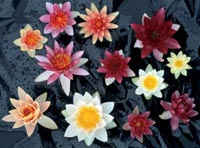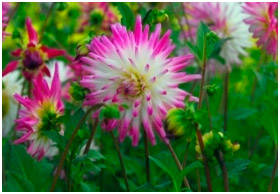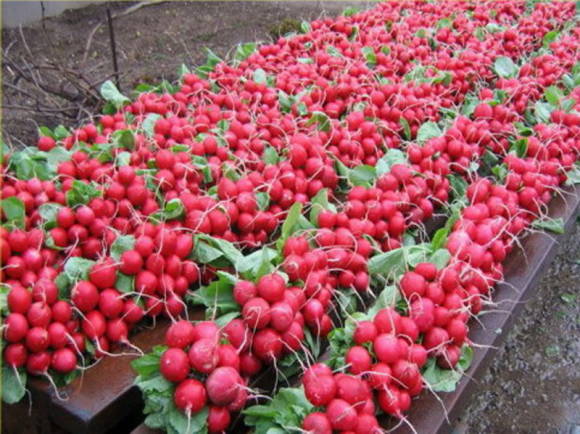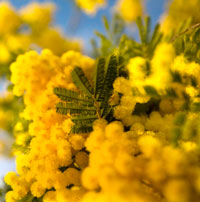Calamus, marsh cinquefoil (not to be confused with marsh cinquefoil), Tatar potion, flat cake, oily root, yavr, Indian reed, marsh ooze, common or odorous calamus - these are all names of one plant that has long been known on different continents - marsh calamus. Its Latin name Acoruscalamus L. (Calamusodaratus) comes from Greek akoros, which means a plant with a fragrant root and kalamos - reed.
 |
A bit of history
Calamus has been considered a universal remedy in many places since ancient times. In this capacity, it was still known to ancient Indian healers and was actively used by them. Its rhizome was chewed during epidemics of cholera, typhus, flu. Information about the medicinal properties of this wonderful plant was brought to Europe by the soldiers of Alexander the Great from a campaign in India. Here is what, for example, the great scientist and physician Abu-Ali Ibn-Sina wrote about the properties of the root of calamus. (Avicenna), who lived in 980-1037: "Absorbs swelling and winds, resolves, cleans without burning, opens ... clears the complexion ... helps with spasms and muscle tears; its decoction also works in the form of pouring and drinking ... Calamus helps with toothache and is good for the heaviness of the tongue ... it thins the corneas and helps against leucorrhoea, but the juice squeezed out of it is especially suitable in both cases ... The decoction of calamus is good for pain in the side and chest ... Calamus helps from pain in a cold liver, strengthens it and the stomach. It also helps from the hardening of the spleen and even severely shrinks the spleen and cleanses the stomach ... It helps with cuts and pain in the intestines and hernia. " Avicenna also emphasized that this plant is a wonderful aphrodisiac: "Calamus increases lust and excites passion." The famous Armenian scientist and physician Amirdovlat Amasiatsi (1415-1496) said about the calamus marsh: “Cleans the eyes and makes them shine. Helps with pain in the heart. Fumigation with the root helps with chronic coughs. But it can be harmful to the lungs. It is known that in addition to its bactericidal effect, calamus tones up the central nervous system well ”. It is believed that it was brought to Eastern Europe by nomads from India and China in the 7th-8th centuries. On a hike, you always need clean water, and for a long time it was noticed that the roots of calamus cleanse reservoirs and that where this plant grows, you can drink water without fear of getting sick. Therefore, hordes of nomads, forcing water barriers, scattered plant rhizomes, which easily took root in new places. And in Central Europe, the first dried specimen of this plant was seen only in the 16th century, when the Italian doctor Mattirli managed to acquire it from the German ambassador at the Tsaregrad court. Shortly thereafter, the Viennese botanist Clausius managed to grow live rhizomes. He propagated this plant and sent it to many botanical gardens. After that, calamus marsh quickly spread in different countries. Marsh calamus (Acoruscalamus) - perennial herb from the Airnye family (Acoraceae), reaching a height of 120-150 cm. At first glance, it looks like an ordinary sedge, but if you look closely, you can see that the part of the plant that protrudes from the water is colored pink. In addition, both rhizomes and leaves have a characteristic pleasant smell. Calamus rhizome is powerful, thick, horizontally creeping and branched, up to 1.5 m long, roundish, 1.5-3 cm in diameter, white, soft, spongy inside, yellow or yellow-green above. On the surface there are characteristic crescent scars from dead leaves. In the soil, the rhizome is fixed by numerous, growing downward, winding white cord-like roots. Its taste is slightly bitter, astringent. Calamus stem is 35-50 cm tall, has a green color, reddish at the base, often with a pinkish tinge.Calamus leaves are juicy, fleshy, bright green, narrow-linear (90-130 cm long and 15-17 mm wide), xiphoid, decorated with white stripes and with pronounced veins. They are located in two rows and alternately at the upper ends of the rhizome and its branches, form fan-shaped bundles. The inflorescence is thick, fleshy, solitary, representing a greenish-yellow, conical, slightly deviated ear 4-12 cm long and consisting of a large number of greenish flowers. Calamus marsh blooms in late May - June and blooms until mid-July. In our climatic conditions, fruits are not formed. Therefore, the plant reproduces only vegetatively (by dividing the rhizome). In the European part of Russia, calamus grows mainly in the south and in the middle zone. The Asian area covers a huge territory from Primorye to the basin of the Irtysh and Ob rivers; in the south, it crosses the borders of Central Asia. Marsh calamus is common in Japan, China, India, North America, the British Isles, Yugoslavia, as well as Ukraine and Belarus. At present, the pure thickets of calamus are rapidly decreasing, since this plant is the object of intensified commercial harvesting. As a result, pure thickets of calamus are replaced by mixed ones, and later on, the final displacement of calamus by marsh iris, reed, riverine horsetail and other aquatic plants occurs. Despite the ingrained view of calamus as an exceptionally wild plant, it is a grateful crop for growing on the site. This plant prefers moist and waterlogged soils, it is a coastal water species. It grows in stagnant and slowly flowing waters with a neutral water reaction (pH 6.8-7.2) on silty, sandy, peaty and alluvial soils. If there is no desire to bother with creating your own reservoir, then the calamus will grow well in the garden, it is not as picky about moisture as it is commonly believed. To do this, in early spring or in the second half of summer, bring pieces of rhizomes with 1-2 buds from natural thickets. Rhizomes are planted on a site prepared and fertilized with organic matter. The distance between plots is 10-20 cm in a row and 45-50 cm between rows. Medium-textured soils are preferred. Sandy soils will dry out too quickly, and heavy loams will somewhat "strangle" your plants. Planting calamus resembles the reproduction of irises, which is well known to any gardener. For better survival during the summer period of planting, its leaves are shortened by 2/3. When planting and the first time after it, watering is desirable. But already established plants survive without watering even in very dry periods, such as, for example, last summer. If it is not possible to come and water the plants for 2-3 weeks, then this is not fatal for them, however, growth also stops. Care includes timely weeding and, in the early years, surface loosening. The annual growth of one rhizome is only 10-70 g. You can dig out the rhizomes 3-4 years after planting. It is better to combine this with a transplant to a new place. After 4 years, even with careful care, calamus begins to germinate with perennial root-sucking weeds and it becomes more and more difficult to weed them out. The yield is 4-5 kg per 1 sq. m. The plant is not affected by pests and diseases. In decorative gardening of the garden, the plant itself is not very impressive, but it is convenient for its endurance as a background plant when creating compositions. It tolerates waterlogging, drafts and cold well. Calamus is best suited for decorating wetland compositions, but as mentioned above, it grows well and far from the reservoir. In nature, rhizomes are harvested in the summer-autumn period (June - September), when the swamps dry up and the groundwater level drops. In this case, calamus is dug out with a pitchfork with bent teeth or pulled out with a rake.It should be borne in mind that natural thickets are restored slowly, therefore, roots must be dug out selectively, removing no more than 30% of the total number of plant shoots on each thicket. The collected rhizomes are cleaned of silt residues, roots and dry parts. Long rhizomes are cut into pieces of 20-30 cm, and thick ones are additionally split longitudinally. Sometimes the bark is removed from them - the cork layer. It turns out two types of raw materials: refined and unrefined. However, unrefined calamus is much more aromatic. Next, the prepared pieces of calamus rhizome are dried in warm, dry, well-ventilated rooms, where they are laid out in a thin layer. When using the dryer, the temperature should not exceed 30-35 ° C. Higher temperatures reduce the quality of raw materials - essential oil volatilizes. The end of drying is determined by the brittleness of the pieces.. The shelf life of raw materials is 1 year. Calamus rhizomes contain essential oil (up to 6%). The main components are monoterpenes and their oxygen derivatives: D-a-pinene (1%), D-camphene (7%), D-camphor (up to 9%), borneol (3%), eugenol and other terpenes. In addition, the oil contains specific bicyclic sesquiterpenes and their oxygen derivatives (ketones): the bitter substance acoron, calamen (10%), kalakon and others. In triploid forms (having, not two, but three identical chromosomes), the ketone shiobunone predominates. The essential oil of calamus roots is a yellowish-brown liquid with a strong "disgusting," as Avicenna believed, "a smell, to which a slight fragrance is mixed." The main carrier of the smell of calamus oil, which, by the way, Avicenna considered unpleasant, are phenolic compounds, for example, 3-asarone (sometimes it makes up to 80% of the total amount of oil) and aromatic aldehyde - azarylaldehyde. In addition to essential oil, calamus rhizomes contain the bitter glycoside acorin C36H60O6, tannins, ascorbic acid (150 mg%), iodine (1.2-1.9 μg / kg), choline, starch (up to 25-40%). Calamus herb is also rich in starch (up to 20%) and contains choline, resin, luceninone glycoside. Its leaves contain up to 130 mg% vitamin C. Recipes for use - in the article The use of calamus in official and traditional medicine.
Botanical description and habitat

Growing on the site

Medicinal raw materials
Active ingredients







